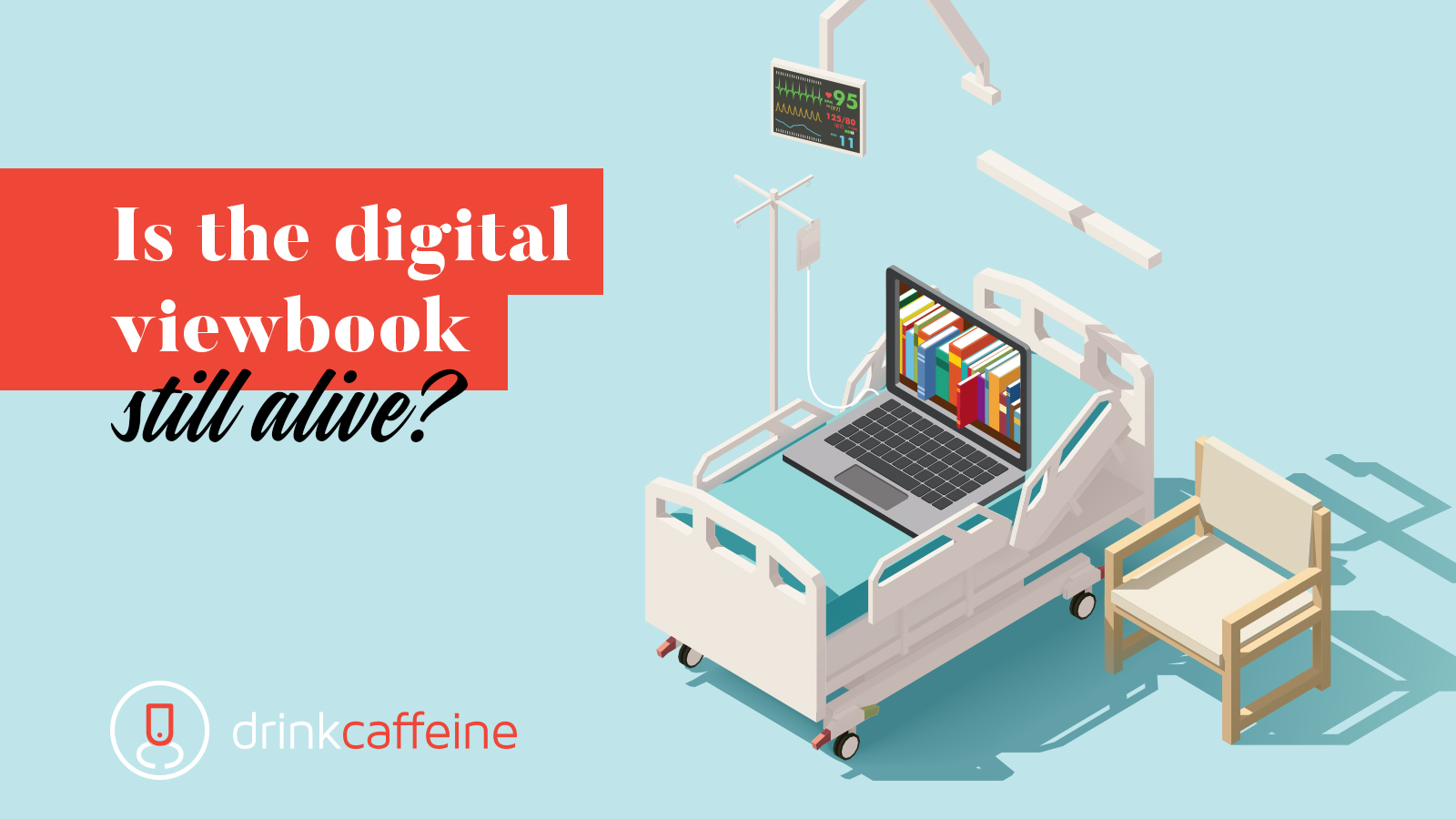
Raise your hand if you dread the viewbook
We understand. We work with many schools that still agonize over whether to continue to pour resources into what has become an article of blind faith: Thou shalt have a Printed Viewbook and It Shall Be a Thing of Beauty.
Here’s our two cents on the viewbook, a very expensive (and recurring) marketing item that cannot produce a report card to prove its effectiveness.
Give your viewbook a new job description
One higher ed blogger (Donna Lehmann) estimated that it takes 10x the work to produce a printed publication vs a digital one. The hours pile up fast.
Clearly, this is not to say that print needs to go away. It simply needs a new job description. Namely, to serve as small-batch, high value content for a very limited audience. Printed viewbooks should live deeper in the lead-to-prospect funnel, which brings us to the digital viewbook doorstep.
Digital accountability
Core analytics for digital viewbooks generally involve the number of users, zip codes, average time spent, and where people enter and exit. Imported content from social networks helps keep the content fresh. And yes, there are content, programming, and production tasks associated with digital viewbooks, but by planning correctly, print executions can be created from the same content, branding, and so forth.
Digital viewbooks past and present
Back in 2015, Temple University was facing the digital vs print viewbook decision and offered a concise explanation. The content is dated, but not the thinking about how to approach a digital viewbook. Three years later the leap to digital is one that many schools have yet to make.
Today’s digital viewbooks can incorporate quizzes, animated infographics, video, slideshows, and more. Some work like microsites, others still use the page flipper function to make it navigable for printophiles.
For example, Salve Regina University did a nice job, personalizing the viewbook experience online and keeping students front and center.
The point is: Consider a new outlook on the balance of digital and print. Talk to us.

